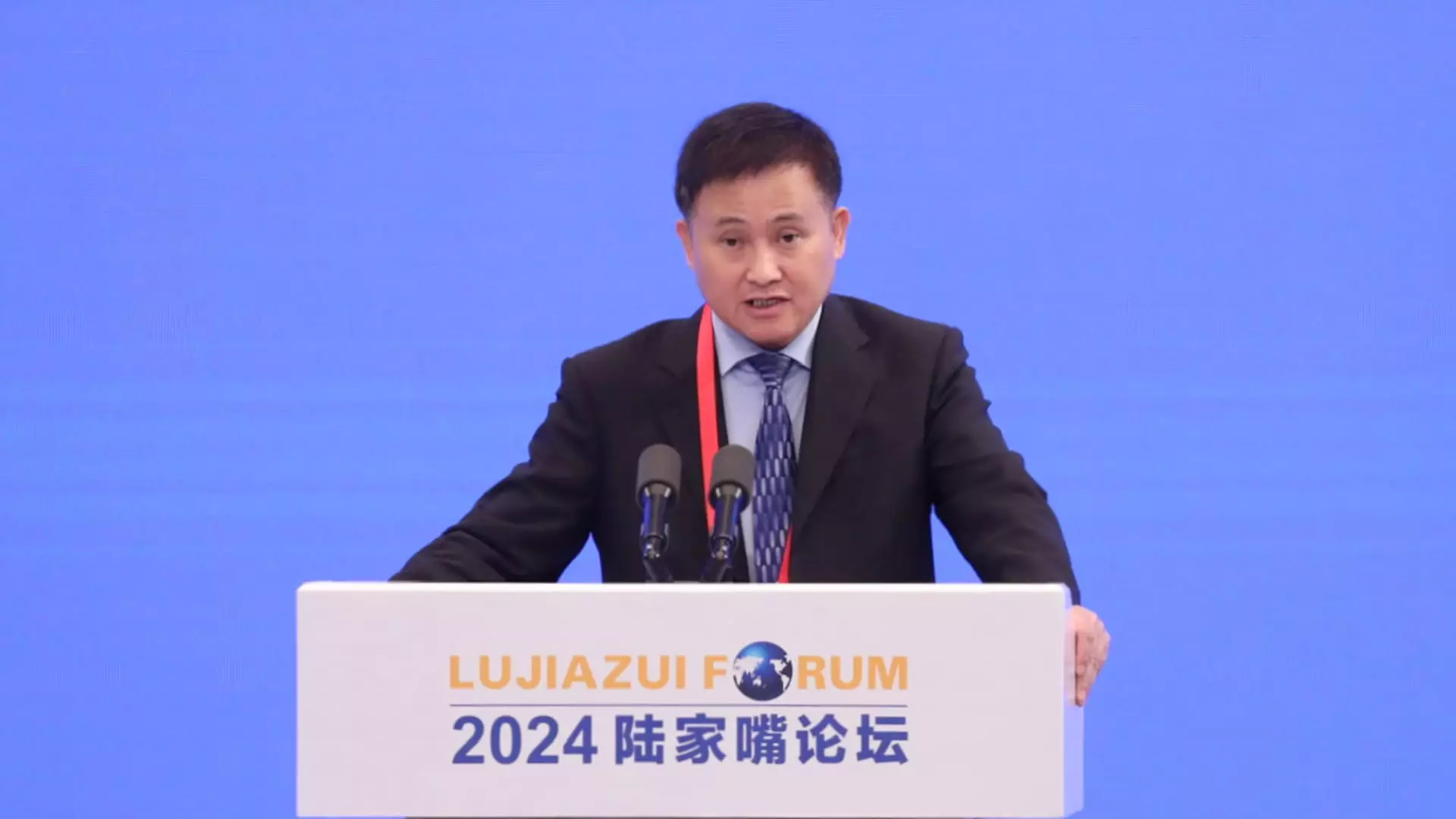In the face of mounting economic challenges, particularly stemming from the real estate sector slump and declining consumer confidence, the People’s Bank of China (PBOC) has announced significant monetary policy adjustments aimed at stimulating growth. The recent press conference led by PBOC Governor Pan Gongsheng showcased a strategic response to economic pressures, specifically the decision to cut the reserve requirement ratio (RRR) by 50 basis points. This move reflects a broader trend toward easing monetary policy as the central bank seeks to foster stability and growth.
The reserve requirement ratio is a critical monetary tool that mandates banks to retain a certain percentage of customer deposits as reserves. By reducing this requirement, the PBOC effectively increases the liquidity available to banks, allowing them to lend more freely. This is particularly crucial in a climate where economic growth is sluggish. By introducing these cuts, the central bank aims to provide immediate support to the financial sector—encouraging lending to businesses and consumers alike.
The timing of this policy shift is noteworthy, occurring shortly after the U.S. Federal Reserve’s decision to cut interest rates. This initiated an easing cycle that has allowed other central banks, including the PBOC, to consider similar measures. Such synchrony among major economies illustrates an interconnected global financial landscape, where actions taken in one region can have ripple effects elsewhere. Pan’s remarks indicate potential for further cuts, suggesting the PBOC is prepared to adapt quickly to changing conditions, with an eye on both domestic and international factors influencing China’s economic landscape.
Governor Pan’s communication strategy during the press conference was particularly intentional. By highlighting the possibility of further cuts to the RRR and the loan prime rate, he emphasized the central bank’s readiness to respond to evolving economic needs. However, the lack of specific timelines for these changes may create a degree of uncertainty for market participants. Financial markets reacted immediately, as evidenced by the significant drop in government bond yields, hitting a record low of 2%. This illustrates investor confidence in the PBOC’s commitment to fostering economic growth, even amid ambiguous timelines for policy implementation.
Despite the cuts to other rates, the PBOC’s decision to maintain the loan prime rate—a crucial benchmark for corporate and household loans—highlights a nuanced approach to monetary policy. By choosing not to alter this rate immediately, the central bank signals caution, indicating a desire to balance economic support with the potential risks of excessive borrowing. This cautious pathway underscores the complexity of the Chinese financial system, which necessitates a careful calibration of various interest rates rather than a singular focus on one main rate, as practiced by the Federal Reserve.
The overarching goal of these policy adjustments is closely connected to China’s full-year economic growth targets. Past indications from high-level meetings have pointed to a strategic focus on bolstering domestic demand and reviving economic activity. With lingering deflationary pressures, the PBOC’s proactive stance is critical; however, economists urge that monetary easing must be paired with fiscal measures to maximize effectiveness. Collaborative efforts between monetary and fiscal policy will be essential to drive meaningful recovery and stimulate consumer and business confidence in the long term.
The People’s Bank of China’s recent announcements represent a significant tactical shift intended to mitigate economic challenges. As the central bank grapples with internal and external pressures, its approach reflects a blend of responsiveness and caution. While the announced measures are steps toward addressing immediate liquidity needs, the absence of specific timing for further cuts raises questions about the pace and effectiveness of these initiatives. Ultimately, ongoing assessments of both monetary and fiscal policies will be crucial in navigating the complexities of China’s slowly recovering economic landscape.

